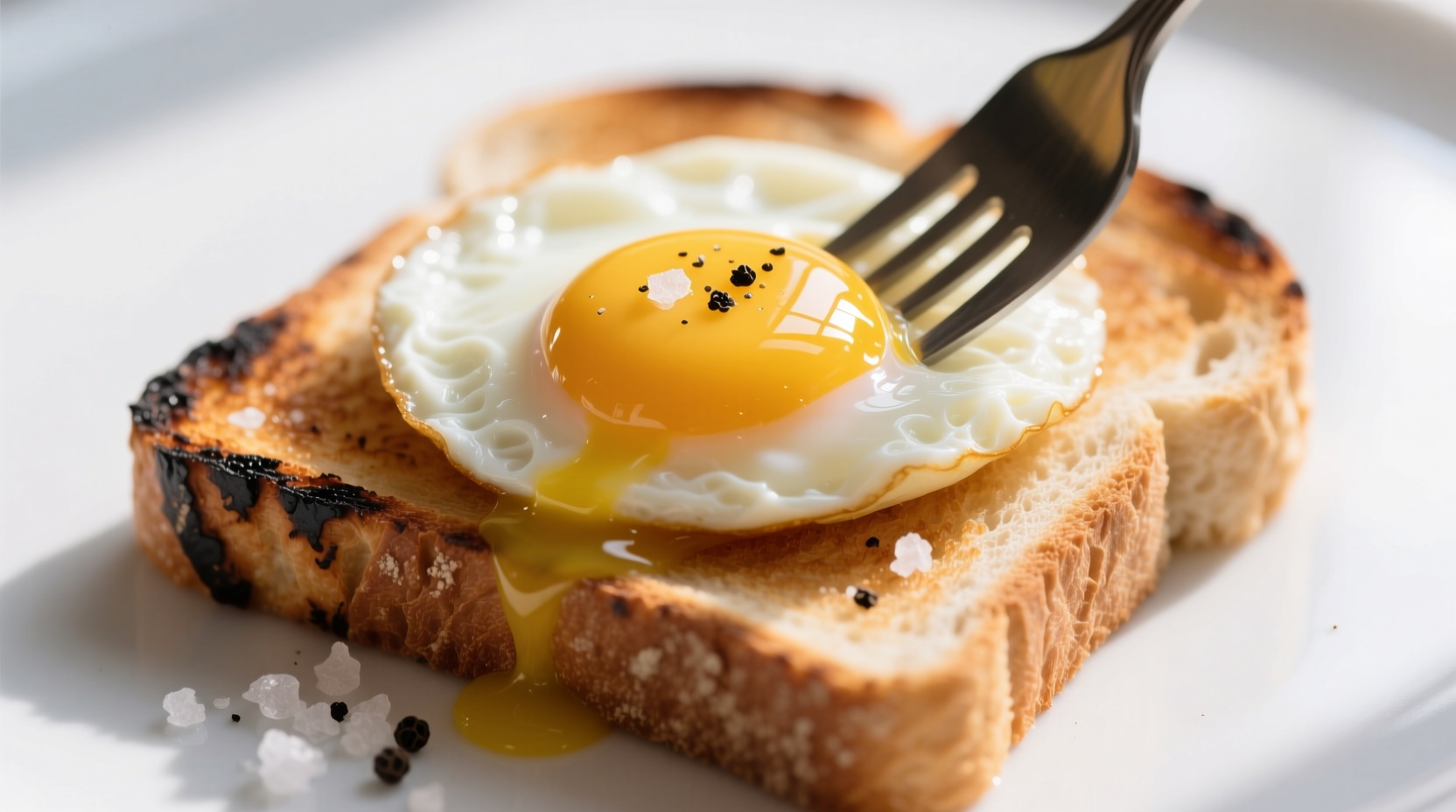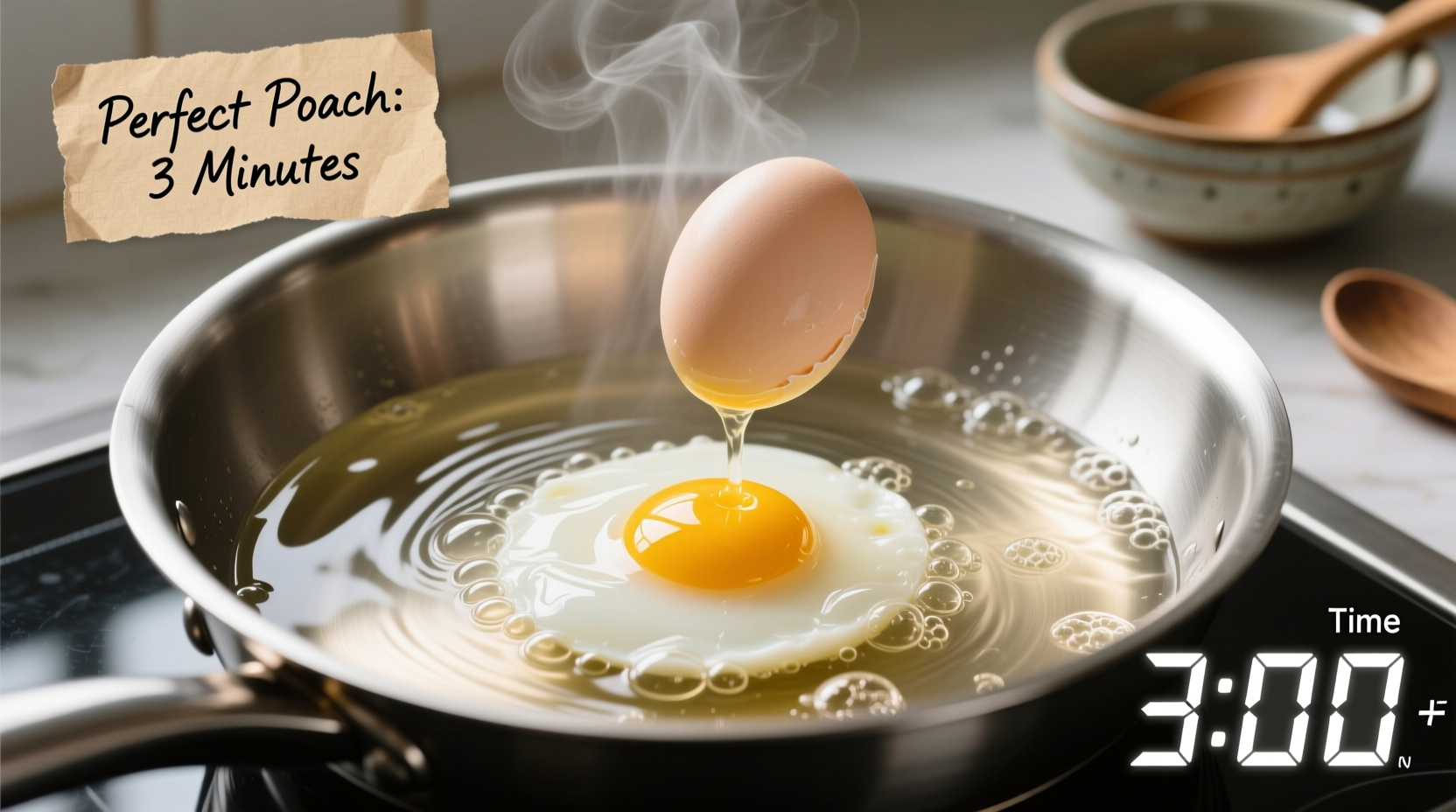The Science Behind Perfect Poached Egg Timing
Getting poached eggs right depends on understanding the delicate balance between time and temperature. According to culinary research from America's Test Kitchen, egg whites begin to coagulate at 140°F (60°C), while yolks start setting around 149°F (65°C). This scientific understanding explains why precise timing matters more than many home cooks realize.
When water reaches a gentle simmer (180-190°F), the proteins in the egg white set quickly enough to contain the yolk without becoming tough. Boiling water (212°F/100°C) causes eggs to cook too rapidly, resulting in rubbery whites and potentially broken yolks. The ideal window for most poached eggs is surprisingly narrow—just 60-90 seconds can mean the difference between perfection and disappointment.

Step-by-Step Timing Guide for Different Preferences
Your desired yolk consistency determines the exact cooking duration. Here's what professional chefs recommend based on extensive testing:
| Yolk Consistency | Water Temperature | Cooking Time | Visual Indicator |
|---|---|---|---|
| Very runny (soufflé-style) | 180°F (82°C) | 2½-3 minutes | White just set, yolk completely liquid |
| Ideal runny (classic) | 185°F (85°C) | 3-4 minutes | Firm white, yolk flowing freely |
| Medium (custardy) | 188°F (87°C) | 4-5 minutes | Firm white, yolk thick but not set |
| Firm (fully cooked) | 190°F (88°C) | 5-6 minutes | Firm white, yolk completely set |
The Complete Poaching Process: From Water to Plate
Water Preparation: Setting the Stage
The foundation of perfect poached eggs begins with proper water preparation. Fill a wide, deep skillet with 3-4 inches of water and bring to a gentle simmer—not a rolling boil. Use a thermometer to verify the temperature sits between 180-190°F (82-88°C). Add 1-2 tablespoons of white vinegar per quart of water, which helps the egg whites coagulate faster without affecting flavor.
Egg Selection and Cracking Technique
Freshness dramatically impacts poaching success. Eggs less than 7 days old have tighter whites that hold their shape better. Before adding to water, crack each egg into a small bowl—this prevents shell fragments and allows you to check for freshness. Create a gentle vortex in the water by stirring clockwise, then slide the egg from the bowl into the center of the whirlpool. This technique wraps the whites around the yolk for a compact shape.
Monitoring and Retrieval
Set your timer immediately after adding the egg. Resist the urge to stir or poke the egg during cooking. After 3 minutes, gently lift the edge of the white with a slotted spoon to check doneness. For runny yolks, the white should be completely opaque but still delicate. Remove with a slotted spoon, drain briefly on a paper towel, and serve immediately.
Troubleshooting Common Timing Issues
Problem: Whites spread too thin
Solution: Increase water temperature slightly (up to 190°F) and add an extra teaspoon of vinegar. Fresher eggs also solve this issue.
Problem: Overcooked rubbery whites
Solution: Reduce cooking time by 30 seconds and ensure water isn't boiling vigorously. A thermometer prevents this common mistake.
Problem: Undercooked runny whites
Solution: Extend cooking time by 30-60 seconds while maintaining proper water temperature. Very large eggs may require additional time.
Advanced Timing Techniques for Professional Results
For consistent results when cooking multiple eggs, use the "batch poaching" method: cook eggs for 3 minutes, then transfer to ice water to stop cooking. When ready to serve, reheat in 170°F water for 30 seconds. This technique, validated by culinary testing at The Culinary Institute of America, ensures all eggs finish at the same perfect consistency.
When preparing Eggs Benedict or other multi-component dishes, time your poached eggs to finish just as your other components are ready. Start the hollandaise first, then poach eggs during the final 5 minutes of preparation for perfectly synchronized timing.
How Egg Size and Temperature Affect Cooking Time
Understanding these variables helps you adjust timing for perfect results:
- Room temperature vs. cold eggs: Cold eggs from the refrigerator add 30-60 seconds to cooking time as they lower the water temperature
- Egg size: Jumbo eggs require 20-30 seconds longer than large eggs
- Altitude: At elevations above 3,000 feet, increase cooking time by 15-20% due to lower boiling points
- Water volume: Smaller amounts of water cool faster when adding eggs, requiring slightly longer cooking times
Practical Application Scenarios
For brunch service: When cooking multiple eggs, use a timer for each egg added to the water. This staggered approach ensures each egg finishes at the ideal moment. Chefs at top breakfast restaurants typically cook no more than 4 eggs at once in a standard skillet to maintain consistent timing.
Meal prep considerations: While traditionally served immediately, you can prepare poached eggs up to 24 hours ahead. After the initial 3-4 minute cook, transfer to ice water, then store submerged in cold water in the refrigerator. Reheat in 170°F water for 45-60 seconds before serving—a technique validated by food safety guidelines from the USDA.











 浙公网安备
33010002000092号
浙公网安备
33010002000092号 浙B2-20120091-4
浙B2-20120091-4